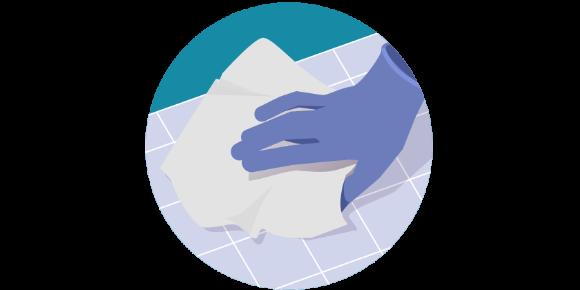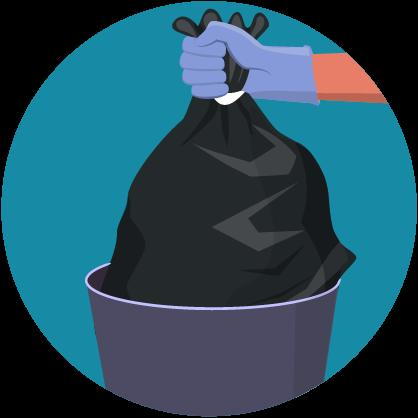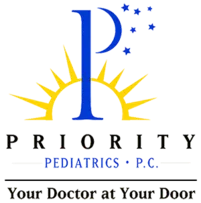
How to Disinfect your home if someone is sick
The official and accepted terms are SARS-CoV-2 (severe acute respiratory syndrome coronavirus 2) when referring to the virus or infection and COVID-19 (coronavirus disease 2019) when referring to the disease or symptoms. These terms were selected based on existing WHO (World Health Organization guidance), which aims to reduce stigma associated with a particular place, group of people, animal, or others that was common under historical virus and disease naming practices that often referred to how or where they were first discovered.
These CDC recommendations can mitigate the risk of transmission of germs COVID-19, Influenza, etc from within households. The principal recommendation is to wear gloves when touching or cleaning any potentially contaminated surfaces or objects. The guidance includes cleaning high-touch surfaces and objects (eg, countertops, tables, keyboards, light switches, doorknobs) with soap and water and disinfecting them using bleach-based cleaning products or alcohol. The guidance also includes guidance for laundry and cleaning soft surfaces (e.g., couch cushions) as well as food preparation and trash disposal. As always, hand hygiene is critical to reducing the risk of transmission.
- Cleaning refers to the removal of germs, dirt, and impurities from surfaces. Cleaning does not kill germs, but by removing them, it lowers their numbers and the risk of spreading infection.
- Disinfecting refers to using chemicals to kill germs on surfaces. This process does not necessarily clean dirty surfaces or remove germs, but by killing germs on a surface after cleaning, it can further lower the risk of spreading infection.
As part of your everyday prevention actions clean and disinfect frequently touched surfaces and objects. For example: tables, countertops, light switches, doorknobs, and cabinet handles.
Wear disposable gloves to clean and disinfect.
Clean
- Clean surfaces using soap and water. Practice routine cleaning of frequently touched surfaces.
High touch surfaces include:
Tables, doorknobs, light switches, countertops, handles (refrigerator, cabinets, etc), desks, phones, keyboards, toilets (including flush lever), faucets (showers, bathrooms kitchens), sinks, etc.
Disinfect
Use diluted household bleach solutions if appropriate for the surface. Check to ensure the product is not past its expiration date. Unexpired household bleach will be effective against coronaviruses when properly diluted.
Follow manufacturer’s instructions for application and proper ventilation. Never mix household bleach with ammonia or any other cleanser.
To make a bleach solution, mix:
5 tablespoons (1/3rd cup) bleach per gallon of water
OR
- 4 teaspoons bleach per quart of water
- Alcohol solutions with at least 70% alcohol.
Household cleaners and disinfectants: Clean the area or item with soap and water or another detergent if it is dirty to clean the soiled surface. Then, use a household disinfectant.
Follow the instructions on the label to ensure safe and effective use of the product.
Many products recommend:
- Keeping the surface wet for several minutes to ensure germs are killed.
- Precautions such as wearing gloves and making sure you have good ventilation during use of the product.
Most EPA-registered household disinfectants should be effective.
Detailed disinfection guidance
Soft surfaces
For soft surfaces such as carpeted floor, rugs, and drapes
- Clean the surface using soap and water or with cleaners appropriate for use on these surfaces.
Launder items (if possible) according to the manufacturer’s instructions.Use the warmest appropriate water setting and dry items completely.
OR
- Disinfect with an EPA-registered household disinfectant. These disinfectants meet EPA’s criteria for use against COVID-19.
Laundry
For clothing, towels, linens and other items
- Wear disposable gloves.
- Wash hands with soap and water as soon as you remove the gloves.
- Do not shake dirty laundry.
- Launder items according to the manufacturer’s instructions. Use the warmest appropriate water setting and dry items completely.
- Dirty laundry from an ill person can be washed with other people’s items.
- Clean and disinfect clothes hampers according to guidance above for surfaces.
Clean hands often
- Wash your hands often with soap and water for 20 seconds.
- Always wash immediately after removing gloves and after contact with an ill person.
- Hand sanitizer: If soap and water are not readily available and hands are not visibly dirty, use a hand sanitizer that contains at least 60% alcohol. However, if hands are visibly dirty, always wash hands with soap and water.
- Additional key times to clean hands include:
- After blowing one’s nose, coughing, or sneezing
- After using the restroom
- Before eating or preparing food
- After contact with animals or pets
- Before and after providing routine care for another person who needs assistance (e.g. a child)
- Avoid touching your eyes, nose, and mouth with unwashed hands.
- Reuters (1/1) reports, “Singing the steps of good handwashing technique to the tune of a popular nursery rhyme may help young children learn the process and fend off common infections picked up in school,” researchers concluded after adapting “the tune of the song Brother John, also known as Frere Jacques [see below], replacing its lyrics with a six-step handwash practice prescribed by World Health Organization.” Then, “to test whether the routine would be effective in removing germs,” investigators “applied fluorescent markings on the hands of the children, who were between six and nine years old, before they washed with soap and water while singing the song.” This routine resulted in “a significant reduction in the markings, according to” findings published online in The BMJ.
“Scrub your palms, between the fingers
Wash the back (one hand), wash the back (other hand)
Twirl the tips (one hand) around (other hand)
Scrub them upside down
Thumb attack (one thumb)! Thumb attack (other thumb)!”
Food
- Stay separated: The ill person should eat (or be fed) in their room if possible.
Wash dishes and utensils using gloves and hot water: Handle any non-disposable used food service items with gloves and wash with hot water or in a dishwasher.
Clean hands after handling used food service items.

Trash
- Dedicated, lined trash can: If possible, dedicate a lined trash can for the ill person.Use gloves when removing garbage bags, and handling and disposing of trash. Wash hands afterwards.
Detailed disinfection guidance
